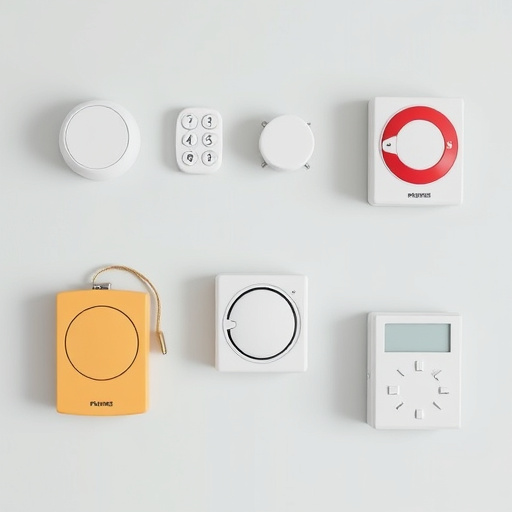Personal alarm systems protect individuals through powerful Personal Alarm Sounds that penetrate walls, deter threats, and signal distress quickly. Features include high decibels, water resistance, compact design, app control, and encryption for safety and privacy. Essential for travel, outdoor activities, and home security, these devices ensure help is summoned swiftly, even in noisy environments.
Personal safety is paramount in today’s world. Electronic personal safety alert systems, also known as personal alarms, offer crucial protection in daily life and emergencies. This comprehensive guide delves into the intricacies of these devices, exploring key components like sound penetration, ensuring signals reach beyond walls, while addressing privacy concerns and security measures. We’ll uncover diverse applications from everyday self-defense to critical emergency responses, highlighting their game-changing role in personal safety.
- Understanding Personal Alarm Systems
- Key Components of an Effective Alert System
- Sound Penetration: Reaching Beyond Walls
- Privacy Concerns and Security Measures
- Applications in Daily Life and Emergencies
Understanding Personal Alarm Systems
Personal alarm systems are designed to provide individuals with a quick and effective means of drawing attention and signaling distress in potentially dangerous situations. These devices often emit a loud, distinct personal alarm sound that can penetrate walls and other barriers, ensuring maximum alertness within a confined space. The high-decibel output is intended to startle and deter potential threats, giving the user valuable time to escape or seek help.
Key features of personal alarm systems include simplicity of use, long battery life, and water resistance. They are often compact and lightweight, allowing users to carry them easily as a wearable device or store them strategically within reach. When activated, these alarms can be heard clearly in close proximity and even from other rooms, making them invaluable for personal safety during travels, outdoor activities, or in emergency scenarios where loud, attention-grabbing signals are essential for rescue operations.
Key Components of an Effective Alert System
An effective electronic personal safety alert system relies on several key components to ensure its reliability and user safety. Firstly, a powerful Personal Alarm Sound is paramount. This should be loud enough to attract attention and deter potential threats, yet still manageable for the user to control and deactivate when necessary. The ability of the alarm to Penetrate Walls is equally crucial, especially in multi-storey buildings or enclosed spaces, where sound may not travel as effectively.
Additionally, a good alert system should incorporate advanced technology that allows for remote activation and monitoring. This can be achieved through mobile apps or connected devices, enabling users to trigger the alarm from afar and providing peace of mind. These features, combined with clear audio cues and reliable transmission, create an indispensable tool for personal safety.
Sound Penetration: Reaching Beyond Walls
Electronic personal safety alert systems have revolutionized the way we protect ourselves, offering a powerful tool for reaching beyond physical barriers. Sound penetration, a key feature of these devices, ensures that distress signals can be heard clearly, even through solid walls. This technology leverages high-decibel alerts to quickly draw attention and summon help, making it an effective game-changer in personal safety.
Whether it’s a personal alarm designed for outdoor adventures or a sophisticated system for home security, the ability to penetrate walls enhances the reach of these devices. In bustling metropolitan areas where hustle and bustle can sometimes mask emergencies, this capability is invaluable. It allows individuals to transmit alerts without concern for distance or structural obstacles, ensuring that their cries for help are heard loud and clear.
Privacy Concerns and Security Measures
While electronic personal safety alert systems offer significant peace of mind, privacy concerns are a valid consideration. These devices often rely on loud personal alarm sounds that can be heard from afar, raising questions about potential misuse or unintended exposure. However, many modern systems incorporate advanced security measures to mitigate these risks. Encryption technologies and secure signal transmission protocols ensure that the personal alarm sound only reaches intended recipients within a specified range, effectively penetrating walls and other barriers without causing disturbance beyond the immediate area.
Manufacturers also employ unique identification codes and app-based controls, allowing users to set up personalized safety networks. This ensures that alerts are triggered only when necessary, enhancing privacy by preventing false alarms. By combining these security measures with responsible use, individuals can leverage personal safety alert systems effectively while safeguarding their privacy.
Applications in Daily Life and Emergencies
In daily life, electronic personal safety alert systems often take the form of portable devices that blend seamlessly into one’s routine. These tools can range from simple personal alarm sounds designed to pierce through walls, to more advanced units with GPS tracking and automatic emergency notifications. They’re ideal for individuals who travel alone, offering peace of mind by ensuring help can be summoned swiftly if needed.
During emergencies, these systems prove invaluable. Whether caught in a dangerous situation or facing an unexpected medical crisis, the ability to instantly alert authorities or loved ones is life-saving. The high-decibel personal alarm sound is designed to grab attention and signal distress, making it particularly effective in noisy environments or situations where vocalizing isn’t possible.
Electronic personal safety alert systems, with their robust sound penetration capabilities, offer a layer of protection by reaching beyond walls. By understanding key components and addressing privacy concerns, these devices prove invaluable in daily life and emergencies. Whether for personal security or public safety applications, continuous advancements ensure effective alerting, enhancing our sense of safety and peace of mind.
